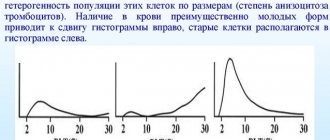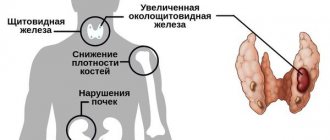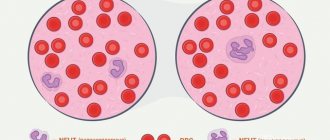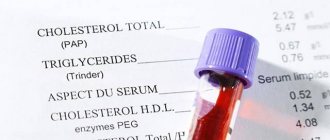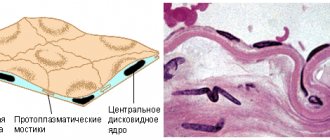Determining atherogenicity allows us to understand and assess the health status of any person, regardless of age. Experts use this indicator to identify the possibility of various pathologies of the heart and blood vessels. These diseases often lead to the death of patients around the world. A sedentary lifestyle has caused an increase in strokes and heart attacks, but each of us can learn a little more about our own health. This will help prevent and detect diseases in time and contact specialists in order to receive timely treatment. The atherogenic coefficient is reduced, what is it, let’s look into this issue together.
Atherogenic index value
Pathologies of the heart and blood vessels often lead to death
Until recently, general practitioners and cardiologists referred their patients for a general blood test, which can be used to evaluate general lipid parameters. Later, after the positive effects of HDL were identified, it became possible to give a better assessment of lipids. The atherogenicity indicator allows you to get a clear idea of the patient’s diet, the type of fats that predominate in his diet, and the metabolic processes in the body.
A fairly simple formula is used for the calculation: the HDL index is subtracted from the total cholesterol indicator, and the resulting difference is divided by the HDL cholesterol indicator. The result will be the atherogenicity index.
The norm is considered to be an indicator that falls within the range of 2.2 to 3.5, but recently many laboratories have lowered the upper limit to 3.0. Reducing the atherogenicity coefficient for the majority of patients with cardiac pathologies is the main goal they strive for in order to avoid the development of acute complications of atherosclerosis.
How is the analysis carried out, how long to wait for results
To determine cholesterol levels, blood is drawn from a vein. The manipulation is carried out in the morning on an empty stomach from 7.00 to 10.00 after full sleep and the absence of stressful situations. Competent specialists pay special attention to this issue and do not prescribe examinations for people after a night work shift.
Directly in the office, the patient is asked to sit down, restore breathing and heartbeat.
For the study, 2 to 5 cm3 of blood is taken into a sterile tube, labeled and sent to the laboratory. The result is issued within 24 hours.
Reasons for a reduced atherogenic index
A decrease in the atherogenicity rate in people belonging to various population groups does not occur very often. There are several reasons that can reduce performance:
- regular use of statins - the most popular drugs today to reduce the concentration of lipoproteins in the body;
- the patient regularly performs feasible sports activities, which is almost impossible for the cardiologist’s regular clients who are overweight;
- the patient was on a low-cholesterol diet for a long period of time before donating blood for analysis to determine the atherogenic coefficient;
- the patient took estrogens, antifungals, erythromycin, which helps reduce this index.
Index calculation (formula), decoding
The atherogenic coefficient is the ratio of “bad” and “good” lipoproteins.

It is expressed by the formula CA = (TC-HDL)/HDL, where:
- KA - atherogenic coefficient;
- TC —total cholesterol;
- HDL is high density lipoprotein.
Features of a reduced atherogenic index
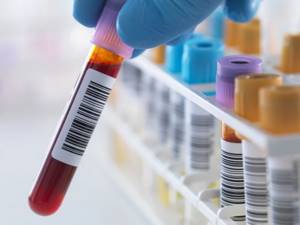
If you lead an active lifestyle and eat in moderation, the atherogenicity indicator will correspond to the norm
Over time, the coefficient can change. Most patients undergoing anti-obesity therapy undergo testing from time to time to evaluate the progress of treatment.
If you lead an active lifestyle and eat in moderation, the atherogenicity indicator will correspond to the norm. When performing significant loads at work or while playing sports, the index may decrease. Usually, good rest and a nutritious diet are enough to normalize it.
Reduced atherogenicity coefficient in women
For a healthy woman, the coefficient in the analysis should correspond to the norm. If it is low, it is a sign of exhaustion of the patient. A similar situation can happen:
- A woman's diet is low in fat. This happens to those who adhere to a diet for a long period of time, as often happens to young girls who constantly lose weight, even when it is not necessary. Usually they independently prescribe similar diets for themselves without consulting a nutritionist, which can be harmful to their health;
- a decrease in the index can be found in women involved in sports. During preparation for competitions, the load on the body increases significantly, this applies not only to the physical, but also to the moral and emotional, everything requires energy. When a coach does not pay enough attention to the condition of his players, and only deals with monitoring their physical fitness, this can cause a decrease in the atherogenicity rate;
- the use of hormonal contraceptives containing estrogen also helps reduce the level of atherogenicity. Many contraceptive medications contain this hormone, which women take every day. This development of events leads to the fact that the results of the analysis are considered not objective.
Reduced atherogenicity coefficient in children

Cholesterol is necessary for the child's body to form new cells.
It is recommended to take such an analysis for children who, from birth, suffer from high cholesterol and congenital pathologies of the cardiovascular system.
If the child’s atherogenicity level is reduced, you need to find out details about his diet. Most of the sweets that children love so much contain practically no lipids: marshmallows, marshmallows. When such food predominates, one should not be surprised that this coefficient is reduced. Although experts do not consider the decrease in the indicator critical, such cases are considered completely differently. Cholesterol is necessary for the child’s body to form new cells, maintain body functions and the child’s strength. Thus, the girls’ reproductive system will not be sufficiently prepared for the monthly cycle, when little fat enters the body. With a lack of fat, which can be determined based on the reduced atherogenic coefficient, brain activity is disrupted, which becomes the reason for his failure at school.
Reduced atherogenicity coefficient in men
Today, such a situation is encountered very rarely. After all, a sedentary lifestyle, which is provided by a variety of gadgets and nutritious food that can be quickly prepared or simply heated, does not at all contribute to reducing this indicator.
When a man’s appointment with a cardiologist reveals that the ratio is reduced, the specialist needs to consult with the patient to identify the cause. This test must be taken in the morning on an empty stomach. There is no need to exercise this morning, because this can lead to a decrease in the indicator. If such a result is obtained, and the patient followed all the recommendations before donating blood for analysis, this indicates that his diet has been without foods rich in animal fats for a long time.
When a man takes antifungal agents, the atherogenic index can also be reduced. The same result will be obtained when using products that contain erythromycin. In such cases, the test results are not taken into account. New tests must be taken after finishing taking the medications.
Reasons for inaccurate analysis
The atherogenicity coefficient is not a constant value and depends on many factors:
| Factors causing a false positive result | Factors causing a false negative result |
| Pregnancy | Vegetarianism |
| Smoking before taking the test | Donate blood while lying down |
| Eating fatty foods during the day before the examination | Physical activity on the day of testing |
| Donating blood while standing | Long-term use of statins prior to the examination |
| Taking steroid drugs | Undergoing therapy including erythromycin preparations at the time of testing |
Normal coefficient indicators
To see deviations from the norm, you need to know it exactly. The average indicators of the atherogenic coefficient are normally 2-3 units. An indicator below 1.9 is considered reduced. The norms of the atherogenic index for men and women are presented in the table.
Norm for women
| Age, years | KA in women |
| 20-30 | <2,2 |
| 30-39 | 1,88-4,4 |
| 40-60 (there are symptoms of ischemic heart disease) | <3,2 |
| 40-60 (no symptoms of IHD) | 3,5-4,0 |
Norm for men
| Age, years | CA in men |
| 20-30 | <2,5 |
| 30-39 | 2,07-4,92 |
| 40-60 (there are symptoms of ischemic heart disease) | 3,0-3,5 |
| 40-60 (no symptoms of IHD) | 3,5-4,0 |
How to reduce the atherogenic coefficient
To reduce the level of atherogenicity, an integrated approach is required, including changes in diet, giving up bad habits and physical exercise. If there is a significant increase in indicators, drug therapy is prescribed.
Diet
A decrease in the atherogenicity coefficient is facilitated by the exclusion of the following products from the menu:
- pork, lamb, lard, nutria meat, duck, goose;

The atherogenic coefficient can be reduced if you eat right. - meat and liver pates;
- canned meat, sausages, smoked meats;
- canned fish;
- full-fat milk and dairy products;
- mayonnaise, butter;
- products containing trans fats;
- confectionery, milk chocolate, sweets;
- bakery products made from premium white flour;
- sugar, jam, ice cream;
- hot chocolate, sweet drinks, packaged juices.
In this case, you should enrich your diet:
- meat of rabbit, turkey, veal, chicken;
- vegetables that do not contain starch;
- greens;
- unsweetened fruits and berries;
- various varieties of rye and whole grain sourdough bread (without yeast);
- cereals;
- bran, ground flax seed;
- sea fish;
- a small amount of nuts;
- vegetable oils (olive, sesame, pumpkin, flaxseed);
- low fat dairy products.
Do not neglect fatty fish varieties containing Omega 3 unsaturated fatty acids. They are a valuable source of “good” cholesterol and compensate for the lack of fat intake during the diet.
Lifestyle modification
A combination of diet and the elimination of bad habits such as smoking and alcohol abuse will help speed up the reduction in KA and consolidate the results of treatment. Another important factor is the introduction of physical exercise into your daily routine. But you should not immediately give intense loads and create stress for the body.

Regular walking, light jogging, morning exercises, and swimming will be enough. Yoga classes under the guidance of a competent instructor will help improve blood circulation, speed up metabolism, and eliminate congestion in the body. Breathing and energy practices will provide an opportunity to improve control of your emotions during stressful situations.
Use of medications
If the level of atherogenicity is significantly exceeded, the specialist prescribes pharmacological drugs. Their selection is carried out in accordance with the obtained laboratory parameters, the individual characteristics of the patient’s body and concomitant pathologies.
Scroll:
- Lipid-lowering drugs (statins), which include Simvastatin and Rosuvostatin. These drugs lower LDL and triglyceride levels while increasing HDL levels.
- Fibrates (Fenofibrate, Ciprofibrate) are often prescribed in combination with statins. Their action accelerates the reduction of LDL levels and the risk of blood clots, and strengthens the walls of blood vessels.
- Bile acid sequestrants (cholestyramine). They form insoluble compounds of cholesterol with bile acids in the intestines, interfere with absorption and accelerate their removal from the gastrointestinal tract.
- Anticoagulants , which prevent the formation of blood clots by reducing blood viscosity and blocking the production of fibrin.
- Antihypertensive drugs prescribed to patients suffering from hypertension. Their selection is carried out on an individual basis, depending on the degree of the disease and the characteristics of the human body. Normalizing pressure allows you to minimize the risk of violating the integrity of blood vessels that occurs due to blockage and varicose veins.
- Derivatives of nicotinic acid (Vitamin B3, Niacin, Enduracin), used only in the initial stage of atherosclerosis. They dissolve small cholesterol deposits on the walls of blood vessels and normalize blood glucose levels.
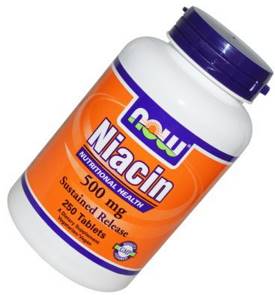
In cases where blood vessels are blocked by cholesterol deposits, surgical treatment methods are used. One of them is excision of the damaged area of the vessel.
But there are also less invasive techniques:
- bypass , in which an additional path is created for the inflow and outflow of blood, bypassing cholesterol plaques;
- stenting , based on the insertion of a metal frame into the lumen of the blocked area, which does not allow the artery to narrow to a critical diameter.
Timely diagnosis of the disease, a properly selected diet and medications will help you avoid surgery.
